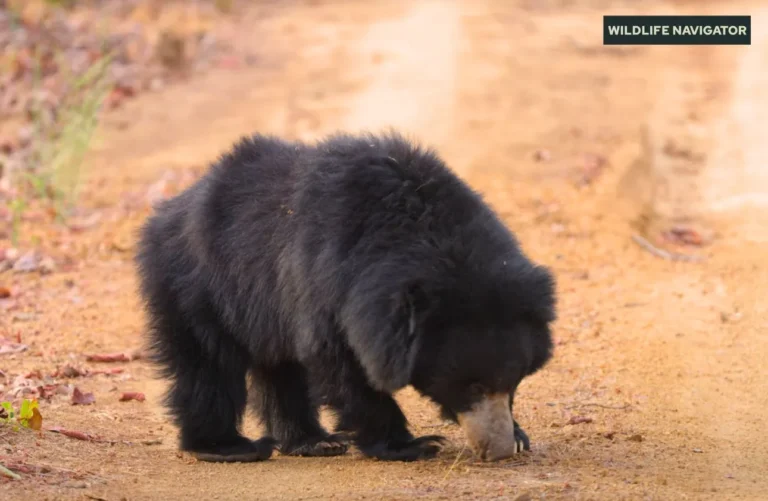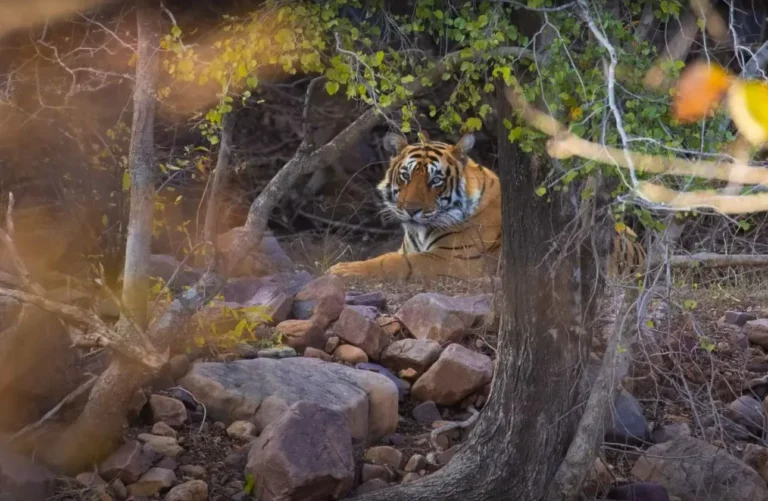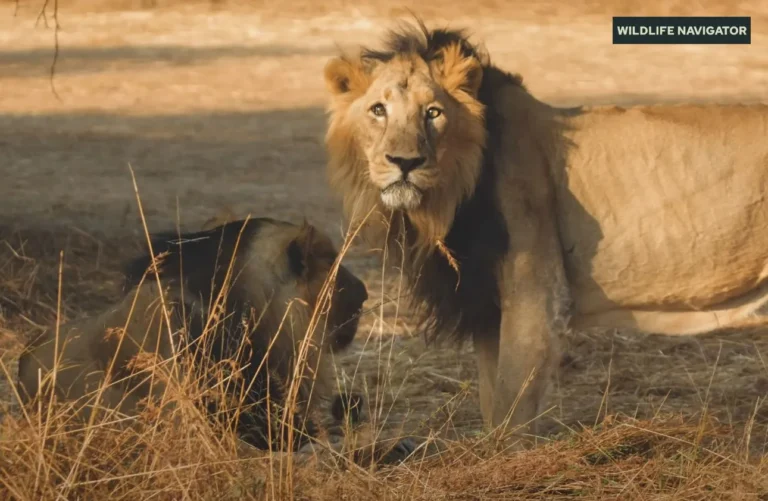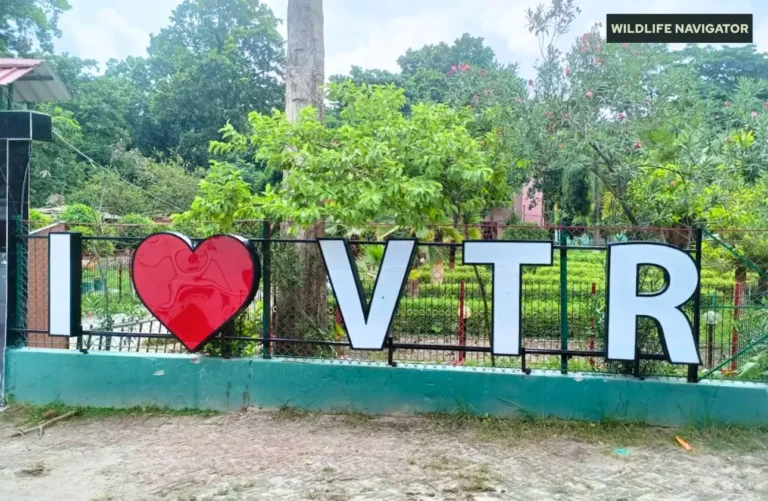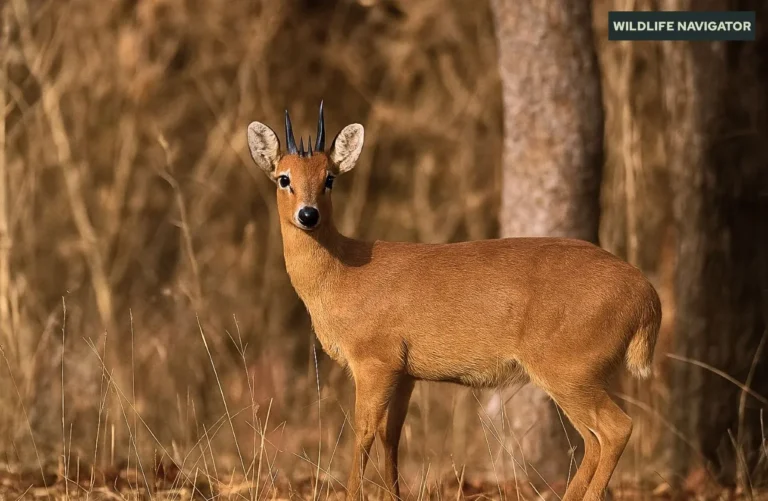Bor Tiger Reserve: A Hidden Gem in Maharashtra’s Wilderness
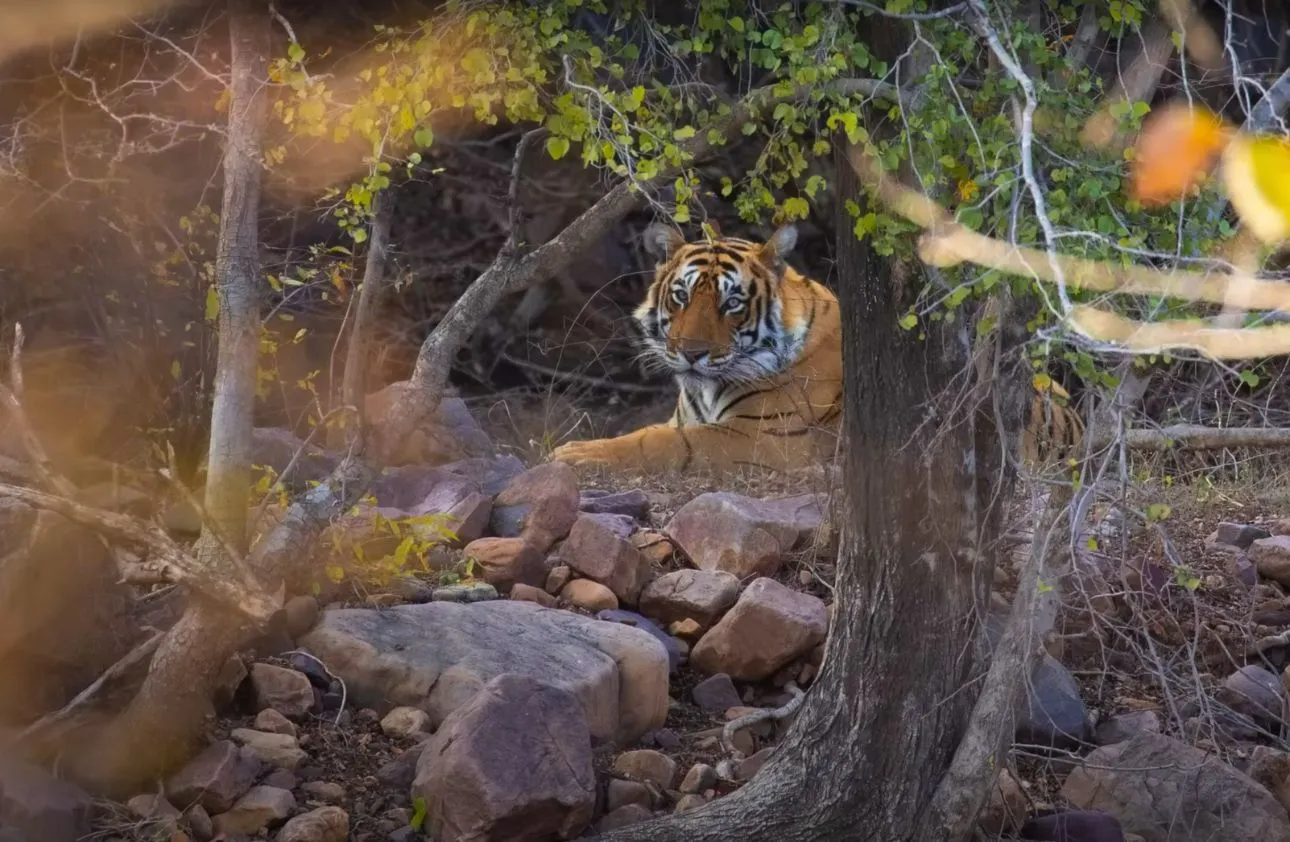
Bor Tiger Reserve is one of the most captivating yet lesser-known wildlife destinations nestled in the heart of Maharashtra in India. Spanning parts of the Wardha and Nagpur districts, this reserve offers a serene blend of lush forests, diverse wildlife, and tranquil landscapes that attract both nature lovers and wildlife photographers.
Declared a Tiger Reserve in 2014, Bor forms a vital part of the Central Indian Tiger Landscape, connecting major protected areas like Pench National Park, Tadoba, and Melghat Tiger Reserves. This ecological linkage makes it a crucial wildlife corridor, ensuring genetic diversity and safe movement for tigers and other large mammals.
Apart from its conservation importance, Bor also enchants visitors with its scenic beauty — from dense teak forests to shimmering water bodies that create a perfect setting for wildlife viewing. The region is not just about tigers; it’s a thriving ecosystem where every plant, bird, and animal plays a role in maintaining nature’s balance.
Whether you’re an avid traveller, wildlife enthusiast, or conservation supporter, exploring Bor Tiger Reserve offers a peaceful yet thrilling experience — one that showcases the wild charm of Maharashtra’s natural heritage.
1. History & Establishment
The history of Bor Tiger Reserve reflects India’s evolving commitment to wildlife conservation. Initially notified as a Wildlife Sanctuary in 1970, Bor’s lush forests and thriving animal populations soon gained ecological significance. Spread over approximately 138 square kilometres, it was later upgraded to a Tiger Reserve in 2014, becoming the 47th tiger reserve under Project Tiger.
The name “Bor” comes from the Bor River, which meanders gracefully through the forest, nourishing its diverse ecosystem. This river not only provides lifeblood to the wildlife but also creates a serene landscape of valleys, grasslands, and water bodies that attract countless species.
The transformation from a small sanctuary to a full-fledged tiger reserve was a result of its growing tiger population and its strategic location between Pench and Tadoba Tiger Reserves. Recognising its role as a vital wildlife corridor, the National Tiger Conservation Authority (NTCA) and the Maharashtra Forest Department enhanced protection measures, anti-poaching patrols, and habitat management programs.
Over the decades, Bor has evolved from a lesser-known forest patch to a key node in Central India’s conservation network. Today, it stands as a shining example of how dedicated protection, community involvement, and ecological awareness can revive and sustain a thriving wildlife habitat.
2. Geography & Landscape
Bor Tiger Reserve is located in the Wardha and Nagpur districts of Maharashtra, forming part of the Satpura-Maikal landscape — one of India’s most biodiverse regions. Spread across roughly 138 square kilometres, the reserve is surrounded by scenic hills, deep valleys, and dense forests that create a captivating natural mosaic.
The Bor River, from which the reserve derives its name, flows gracefully through the heart of the forest. It serves as the lifeline of the region, feeding numerous smaller streams and waterholes that sustain wildlife throughout the year. During summer, these water sources become prime spots for observing animals like deer, gaur, and even tigers coming down to drink.
The landscape is a blend of tropical dry deciduous forests, dominated by teak and bamboo, interspersed with patches of grasslands and open scrub. Elevations range from gentle slopes to rugged hillocks, offering a diverse range of habitats that support everything from herbivores to apex predators.
The climate is typically tropical, with hot summers (March–June), monsoon rains (July–September), and pleasant winters (October–February) — the best time for safaris and wildlife photography.
Bor also holds immense ecological importance as a corridor connecting Pench, Tadoba, and Nagzira Tiger Reserves, facilitating safe movement for tigers and maintaining the genetic health of Central India’s tiger population.
3. Flora of Bor Tiger Reserve
The forests of Bor Tiger Reserve are a lush representation of tropical dry deciduous vegetation, typical of central India’s landscape. The flora here not only defines the beauty of the reserve but also forms the foundation of its thriving ecosystem. The vegetation provides food, shelter, and breeding grounds for numerous wildlife species — from herbivores to top predators.
The forest is primarily teak-dominated, but it also hosts a rich diversity of trees, shrubs, grasses, and climbers that change in colour and texture with the seasons. During the monsoon, the reserve turns into a green paradise, while in summer, the dry leaves create a golden hue across the forest floor.
3.1 Major Tree Species
- Teak (Tectona grandis): The most dominant tree, providing shade and habitat for many animals.
- Tendu (Diospyros melanoxylon): Known for its leaves used in traditional bidi making.
- Ain (Terminalia tomentosa): A tall, sturdy tree that supports bird nesting.
- Haldu (Adina cordifolia): Recognisable by its yellow flowers; attracts pollinators.
- Mahua (Madhuca indica): Valued for its flowers and fruits, vital for local communities and wildlife.
- Bamboo (Dendrocalamus strictus): Found in dense clumps, offering cover to tigers and deer.
- Palash (Butea monosperma): Adds vibrant orange blooms to the forest in summer.
The combination of dense teak forests, bamboo thickets, and open meadows creates an ideal habitat for herbivores, which in turn support the tiger population. This delicate balance of flora makes Bor a self-sustaining natural wonder.
4. Fauna of Bor Tiger Reserve
The fauna of Bor Tiger Reserve reflects the richness of Central India’s wildlife. Despite its relatively small size, Bor supports an impressive variety of animal species — from majestic predators to colourful birds. The presence of tigers and leopards at the top of the food chain is a sign of a healthy and balanced ecosystem.
The dense forests, grassy meadows, and perennial water bodies provide ideal conditions for both terrestrial and aquatic life. Each species plays a vital role in maintaining the ecological harmony of the reserve.
4.1 Major Mammals Found in Bor Tiger Reserve
- Bengal Tiger (Panthera tigris tigris): The star attraction of the reserve; sightings are frequent near water bodies.
- Leopard (Panthera pardus): Elusive and stealthy, often seen in rocky or hilly areas.
- Sloth Bear (Melursus ursinus): Known for its shaggy coat and love for termites and honey.
- Indian Gaur (Bos gaurus): The largest wild cattle species, found in herds grazing across grasslands.
- Chital or Spotted Deer (Axis axis): The most common herbivore, seen grazing in open areas.
- Sambar Deer (Rusa unicolour): A key prey species for tigers.
- Wild Boar (Sus scrofa): The fearless forager that thrives across the reserve.
- Indian Langur and Rhesus Macaque: Common primates often seen in forest canopies.
4.2 Avifauna and Other Wildlife
- Over 160 bird species, including peacocks, hornbills, drongos, eagles, and kingfishers.
- Reptiles such as monitor lizards, Indian cobra, and pythons are also present.
- The water bodies harbor turtles, fish, and amphibians, adding to the ecological diversity.
Bor’s wildlife thrives due to the careful balance between its predators and prey — making it a true microcosm of India’s wild heart.
5. Tiger Population & Conservation Efforts
Bor Tiger Reserve plays a crucial role in maintaining the tiger population of Central India’s landscape. Despite its small area, the reserve supports a stable population of 10–15 tigers (including cubs), which often move between Pench, Tadoba, and Nagzira Tiger Reserves through connected forest corridors.
To ensure their safety, the Maharashtra Forest Department and NTCA have implemented strict anti-poaching measures, regular camera trap monitoring, and habitat improvement projects. Waterhole development and grassland management have enhanced prey availability, benefiting big cats and other carnivores alike.
Community awareness programs and eco-tourism initiatives further encourage local participation in conservation. Together, these efforts have made Bor a successful example of how smaller reserves can still play a major role in India’s tiger recovery story.
6. Visitor Information
Visiting Bor Tiger Reserve offers a peaceful wildlife experience without the crowds seen in larger parks. The reserve is well-connected and easy to explore throughout the year.
6.1 How to Reach
- Nearest Airport: Dr. Babasaheb Ambedkar International Airport, Nagpur (65 km)
- Nearest Railway Station: Wardha Junction (35 km)
- By Road: Well-connected via NH-44 and NH-7 from Nagpur and Wardha
6.2 Entry & Safari Details
- Safari Timings: Morning (6:00 AM – 10:00 AM) & Evening (3:00 PM – 6:00 PM)
- Booking: Online or at the forest gate (limited slots available)
- Safari Mode: Jeep safaris and guided tours only
- Best Entry Gates: Hingni and Seloo ranges
Visitors must follow all park rules, maintain silence, and avoid littering to help preserve Bor’s pristine wilderness.
7. Accommodation & Stay
Staying near Bor Tiger Reserve offers travellers a serene experience amidst nature. Whether you prefer a government forest rest house or a private eco-lodge, there are options for every budget and comfort level. The main accommodation clusters are around Hingni, Seloo, and Wardha.
7.1 Forest Rest Houses (MTDC & Forest Department)
These are the best options for travellers seeking a peaceful stay close to the core area.
- Bor Forest Rest House (Hingni Range) – Simple yet scenic stay within the forest.
- Facilities: Basic rooms, solar lights, limited electricity, forest view.
- Charges: ₹1,500 – ₹2,500 per night (approx.)
- MTDC Bor Resort (near Bor Dam) – Comfortable and government-approved lodging with better amenities.
- Facilities: AC/non-AC rooms, canteen, parking, guided safari help.
- Charges: ₹2,000 – ₹3,500 per night
7.2 Private Resorts & Eco-Stays
These are located a few kilometres from the reserve, offering modern facilities and scenic surroundings.
- Bor Jungle Resort (Seloo):
- Facilities: Luxury tents, cottages, swimming pool, indoor games.
- Charges: ₹4,000 – ₹6,000 per night (including meals)
- Wildlife Gateway Resort (Wardha):
- Facilities: AC rooms, restaurant, nature trails, jeep safari arrangements.
- Charges: ₹3,500 – ₹5,000 per night
7.3 Budget & Homestay Options
Ideal for backpackers or solo travellers wanting an authentic rural experience.
- Local Homestays (Hingni & Seloo Villages):
- Facilities: Clean rooms, home-cooked food, cultural interaction.
- Charges: ₹800 – ₹1,500 per night
Booking Tip: Always confirm availability through the Maharashtra Forest Department or MTDC official website, as some accommodations operate seasonally or require advance booking.
8. Best Time to Visit & Activities
The best time to visit Bor Tiger Reserve is from October to June, when the weather is pleasant and wildlife sightings are frequent. Each season offers a different charm — from lush green monsoon landscapes to dry summer safaris where animals gather near water sources.
8.1 Seasonal Highlights
- Winter (October – February):
- Ideal for safaris, birdwatching, and photography.
- Pleasant weather (12°C–28°C).
- Migratory birds can be spotted near Bor Dam and water bodies.
- Summer (March – June):
- Peak time for tiger and leopard sightings near waterholes.
- Temperatures can reach 40°C but wildlife activity increases.
- Monsoon (July – September):
- The park turns lush green but remains closed for safaris due to heavy rains.
- Great for off-season nature photography and surrounding village exploration.
8.2 Popular Activities
- Jeep Safari: The main activity; explore core and buffer zones with expert guides.
- Birdwatching: Over 160 bird species including peacocks, hornbills, and eagles.
- Nature Walks: Short guided trails near the buffer area.
- Wildlife Photography: Excellent opportunities at waterholes and along forest tracks.
- Eco-Tourism & Local Interaction: Visit nearby villages to experience rural life and conservation efforts.
9. Nearby Attractions
While exploring Bor Tiger Reserve, visitors can combine their wildlife experience with a visit to several nearby attractions. These sites offer historical, cultural, and ecological experiences, making the trip more fulfilling.
9.1 Bor Dam
- Located within 5–10 km of the reserve.
- Popular for picnics, birdwatching, and serene sunset views.
- Migratory and resident birds frequent the reservoir, making it a paradise for photographers and bird enthusiasts.
9.2 Pench and Tadoba Tiger Reserves
- Within 150–200 km, both reserves are major tiger habitats in Maharashtra and Madhya Pradesh.
- Can be combined for a wildlife circuit, allowing tourists to witness different forest ecosystems and larger tiger populations.
9.3 Wardha & Nagpur
- Wardha: Known for its historical sites, including Mahatma Gandhi’s Sevagram Ashram, approximately 35 km away.
- Nagpur: About 65 km from Bor, offering hotels, restaurants, and Dragon Palace Temple as a spiritual stopover.
9.4 Local Villages & Eco-Tourism Experiences
- Villages near Bor provide insight into rural Maharashtrian culture.
- Activities include handicrafts, traditional food, and guided village walks.
These nearby attractions complement a Bor Tiger Reserve safari, giving visitors a mix of wildlife, culture, and scenic beauty during their trip.
10. Conclusion
Bor Tiger Reserve is a hidden jewel in Maharashtra’s wildlife landscape. Despite its relatively small size, it plays a vital role in tiger conservation, serving as a key corridor between larger reserves like Pench and Tadoba. The reserve’s rich flora and fauna, scenic landscapes, and tranquil environment make it an ideal destination for wildlife enthusiasts, photographers, and eco-tourists.
Visiting Bor is not just about spotting tigers; it is about experiencing the harmony of nature — from dense teak forests and sparkling water bodies to a wide variety of mammals, birds, and reptiles. The well-maintained safaris, forest rest houses, and nearby attractions provide an immersive experience that connects visitors with India’s natural heritage.
